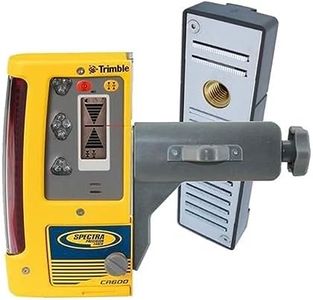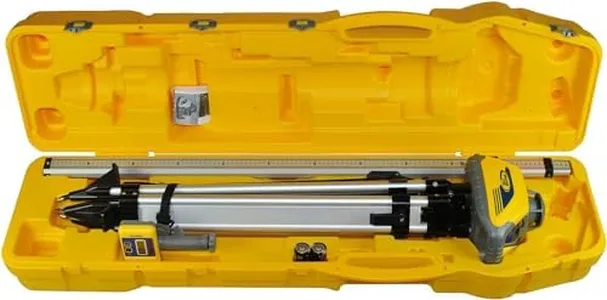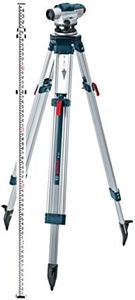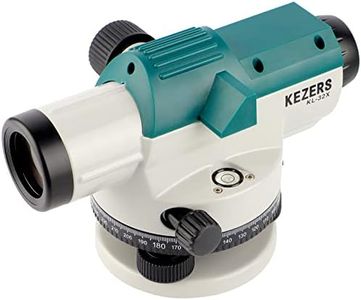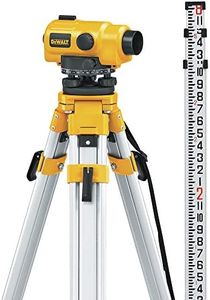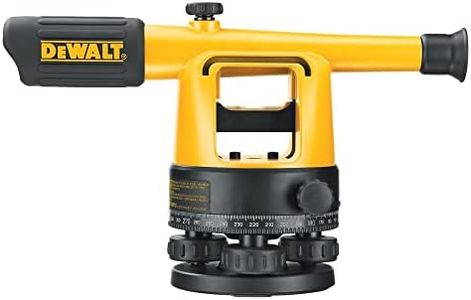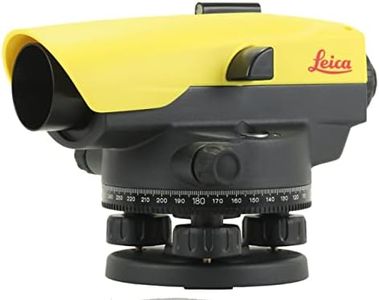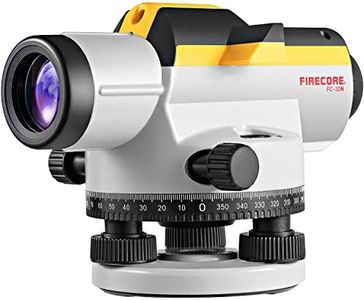We Use CookiesWe use cookies to enhance the security, performance,
functionality and for analytical and promotional activities. By continuing to browse this site you
are agreeing to our privacy policy
10 Best Transit Levels
From leading brands and best sellers available on the web.Buying Guide for the Best Transit Levels
Choosing the right transit level is important for anyone involved in construction, landscaping, or surveying, as it helps ensure accurate leveling and alignment over distances. When picking a transit level, you should focus on how you'll use it—whether for simple leveling tasks or more complex layout and angle measurements. Understanding the key specifications will help you select a model that matches your needs and makes your work easier and more precise.MagnificationMagnification refers to how much closer the transit level can make distant objects appear. This is important because higher magnification allows you to see more detail at longer distances, which can be helpful for large job sites. Typically, magnification ranges from about 20x to 32x. Lower magnification (around 20x) is suitable for small-scale projects or short distances, while higher magnification (28x or more) is better for large sites or when you need to see fine details far away. Choose a magnification level based on the size of your work area and how precise your measurements need to be.
AccuracyAccuracy tells you how close the transit level's readings are to the true level or angle. This is usually measured in millimeters per kilometer or inches per 100 feet. Higher accuracy (lower numbers) means more precise measurements, which is crucial for tasks like foundation work or road construction. For general landscaping or basic construction, moderate accuracy is often enough, but for professional surveying or critical building projects, look for the highest accuracy you can find.
Working RangeThe working range is the maximum distance over which the transit level can provide reliable measurements. This is important because it determines how far you can set up your instrument from your target points. Shorter ranges (up to 100 feet) are fine for small projects, while longer ranges (300 feet or more) are needed for large construction sites or surveying open land. Think about the typical size of your projects to decide what range you need.
Horizontal Circle/Angle MeasurementSome transit levels can measure horizontal angles, which is useful for laying out corners, property lines, or other angles on a site. The ability to measure angles adds versatility, but not everyone needs this feature. If your work involves more than just leveling—like setting out building corners or checking slopes—look for a model with clear, easy-to-read angle markings. If you only need to check level, a basic model without this feature may be enough.
Leveling MechanismTransit levels can be leveled manually using screws and bubble vials, or they can have automatic (self-leveling) mechanisms. Manual leveling requires more time and skill, but is usually less expensive. Self-leveling models are quicker and easier to set up, reducing the chance of user error. If you’re new to using transit levels or want to save time, a self-leveling model is a good choice. If you’re experienced and don’t mind spending a bit more time on setup, manual leveling can work well.
Durability and Weather ResistanceSince transit levels are often used outdoors, their ability to withstand dust, moisture, and rough handling is important. Look for models with sturdy construction and weather-resistant features if you’ll be working in challenging environments. If you mostly work indoors or in mild conditions, this may be less of a concern. Consider your typical job site conditions to decide how rugged your transit level needs to be.


